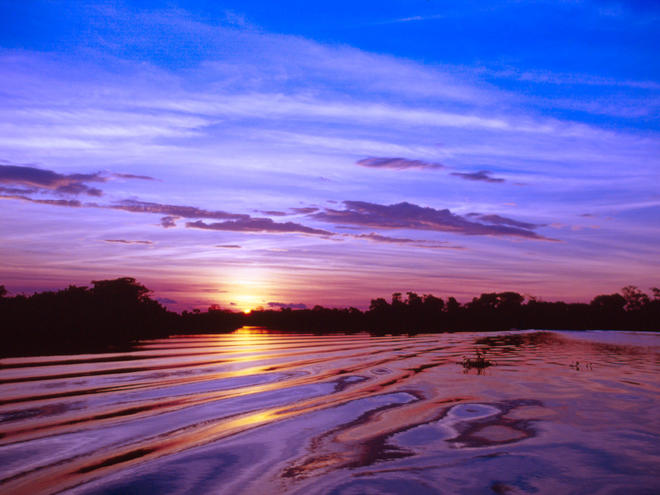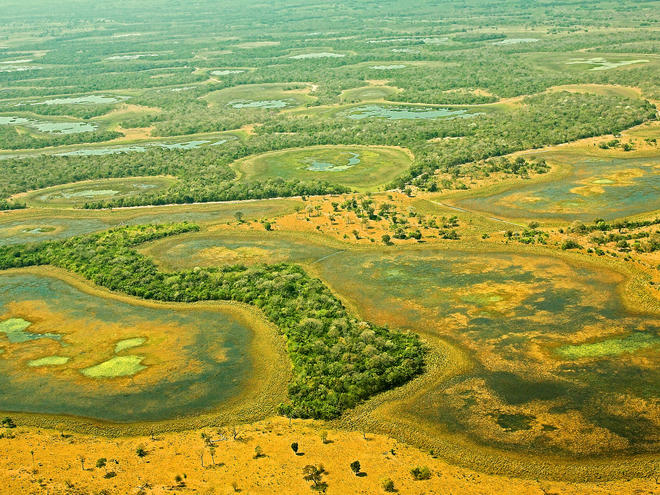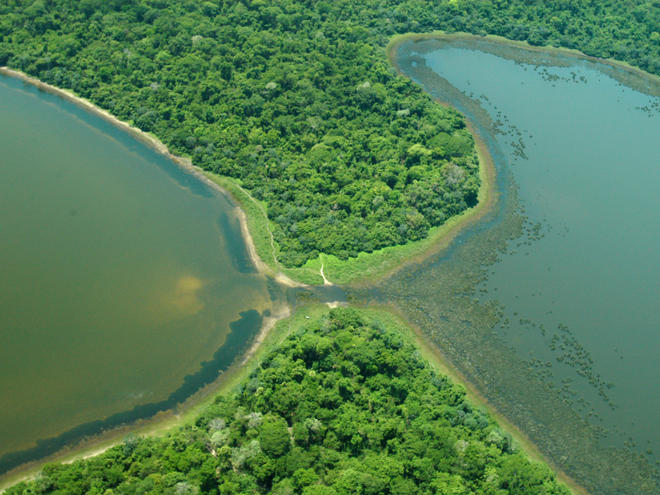


Wetlands—places where the land is covered by water, either salt, fresh, or somewhere in between—cover just over 6% of the Earth's land surface. Sprinkled throughout every continent except Antarctica, they provide food, clean drinking water, and refuge for countless people and animals around the world. Despite their global significance, an estimated one-half of all wetlands on the planet have disappeared.
Amid the loss, one specific wetland stands out: the Pantanal. At more than 49.4 million acres, the Pantanal is the largest and one of the most pristine wetlands in the world. The Pantanal sprawls across three South American countries—Bolivia, Brazil and Paraguay—and supports millions of people there, as well as communities in the lower Rio de la Plata Basin.
WWF is working on the ground to conserve the region through the creation of protected areas and promoting sustainable use of natural resources.
Check out these facts about the Pantanal that every wetland enthusiast should know!
1. The Pantanal is larger than 29 US states and at least nine European countries.
That’s right! If the Pantanal was overlaid on the US it would be bigger than New York, Florida, and Wisconsin, among 25 other states. Put the Pantanal over Europe, and it would be larger than at least nine countries, including England, Austria, Hungary, Greece, and Ireland.
2. The Pantanal comprises about 3% of the entire world’s wetlands.
A conservative, cumulative estimate of the size of the world’s wetlands places the figure at 1.4 billion acres. Though only a fraction of that figure, the Pantanal remains more intact and pristine that most other wetland systems.
3. The Pantanal is a refuge for iconic wildlife.
This massive wetland has the largest concentration of crocodiles in the world, with approximately 10 million caimans. Jaguars, the largest feline in the Americas, hunt caiman in the Pantanal, which has one of the highest density of jaguars anywhere the world. The Pantanal is also home to the biggest parrot on the planet, the hyacinth macaw. Sighting these animals and others help attract the 1 million tourists who visit the Pantanal every year.
4. Less than 5% of the Pantanal is protected.
The areas that are protected are globally significant, with parts that fall under an agreement called Ramsar that requires national governments to conserve and wisely use wetlands, and some that are UNESCO World Heritage Sites and Biosphere Reserves. Around 95% of the Pantanal is under private ownership, the majority of which is used for cattle grazing.
5. Paraguay, Bolivia and Brazil are creating a new way to manage the Pantanal across borders.
WWF supports a new initiative in which the three countries are working on a tri-national agreement for the sustainable development and conservation of this globally significant freshwater resource. The framework they're creating could be replicated in other places around the world.
Published January 31, 2018 at 06:00AM
No comments:
Post a Comment